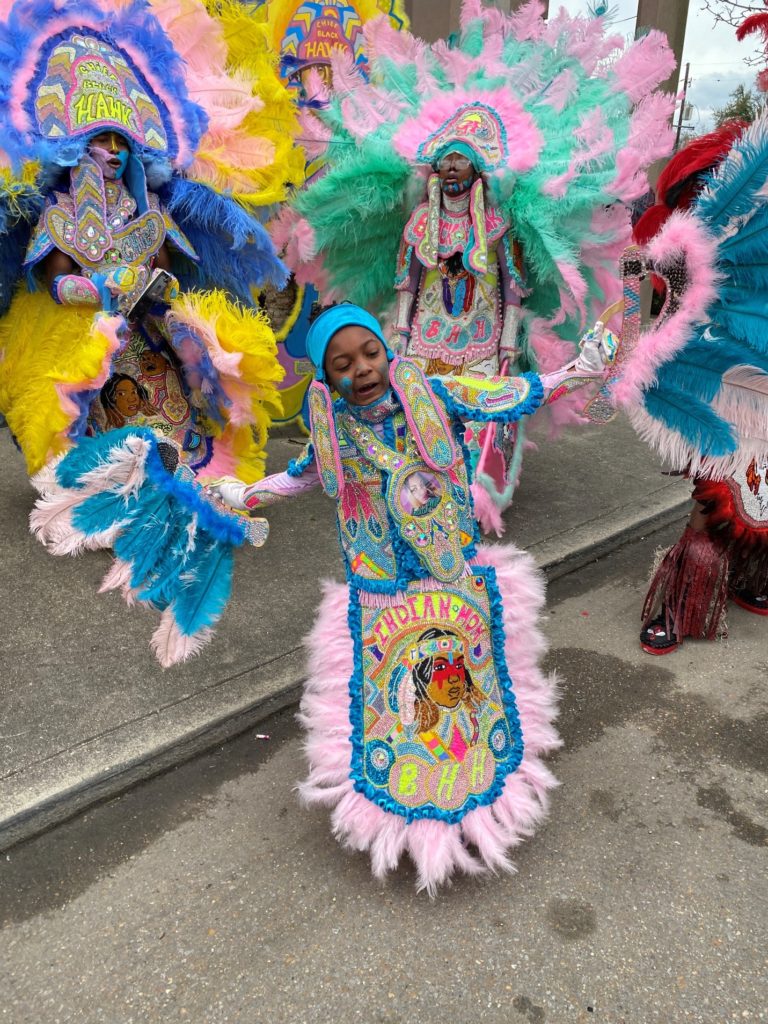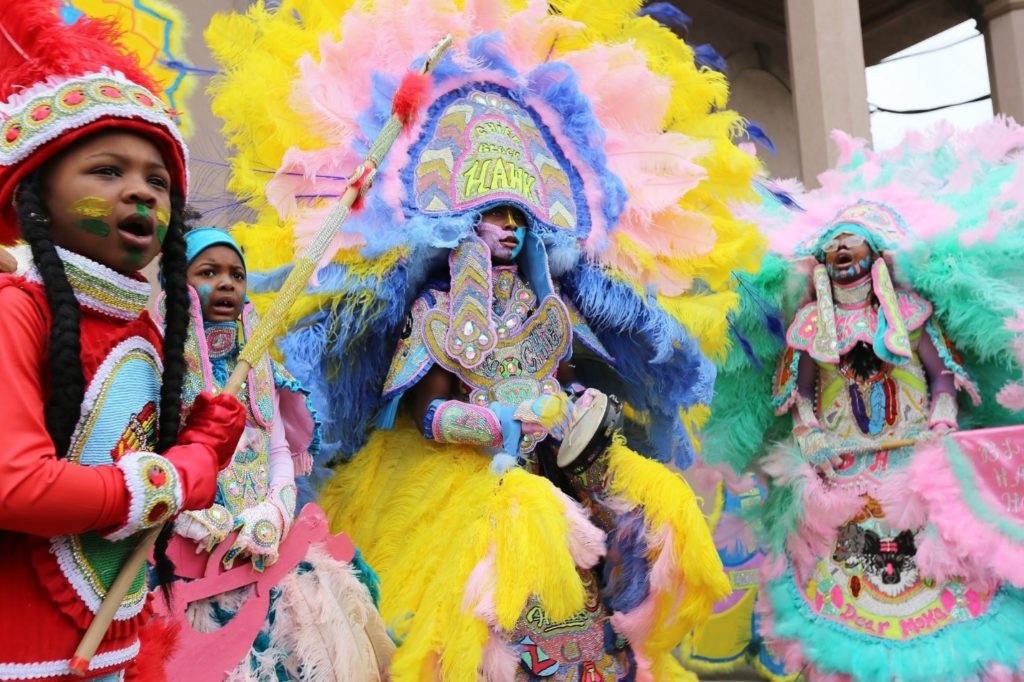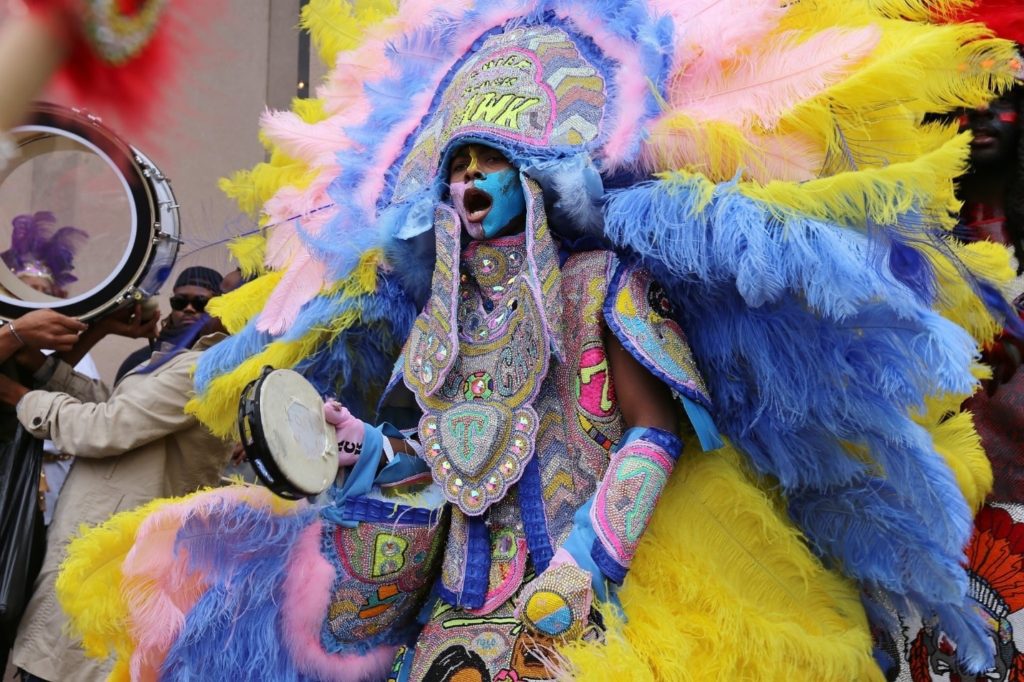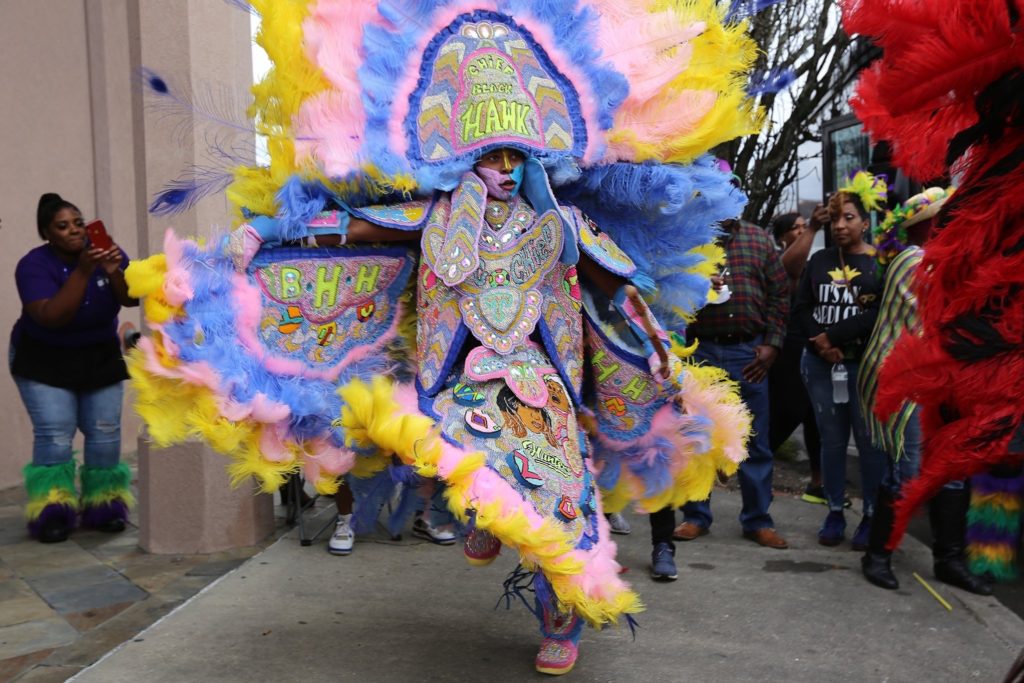Every year millions of Americans take part in Mardi Gras or the carnival season. The carnival season last for around three weeks, and consist of live music, bands, food, festivities, and an abundance of culture. Most tourist celebrate the carnival season on Bourbon street, while other New Orleans natives celebrate throughout the entire New Orleans. Mardi Gras is French for Fat Tuesday; Fat Tuesday is the last day of festivities. Fat Tuesday is the biggest day of the carnival season and the only day you can see a Mardi Gras Indian leading with their tribe. The purpose of masking is to pay homage to Native Americans who helped Africans during slavery, and to positively impact the community.
“The Native Americans took them in, taught them their ways, taught them how to survive, taught them their language and hid them from slave owners”, said Tinice Williams, Mother of Black Hawk Hunter tribe members.

The Mardi Gras Indians have been leading communities of people throughout the carnival with their intricate suits, heart filled songs, and glorious performances. Masking Indian has been a tradition for some families for hundreds of years, and almost every community or parish has their own tribe. Masking Indian isn’t discriminatory of age, or gender, but you need discipline, and creativity a few characteristics The Black Hawk Hunter tribe possess.
“My sons are creating a legacy for our family but there are also Masking Indian tribes that has a chief that has masked for over 50 years.” said Williams.
The Black Hawk Hunter tribe is one of the youngest tribes that you will see leading Fat Tuesday, the BHH tribe is also actively involved with their community participating in ADHD fundraisers, and meet in greet literature events. The BHH are a young tribe targeting their peers to present alternatives that can keep them out of trouble. Member of the tribes don’t have free time like other kids and are always on deadlines to ensure they are prepared for next carnival season. The BHH tribe has less than 12 members, Brothers, Terrance “Tee” The Big Chief,16, and Tyrell Williams,14, the gang flag, got their exposure to the Mardi Gras Indian culture from an older cousin in 2011, and have been Masking ever since. The youngest brother Simeon Israel is the Spyboy and he’s 8 years old.

“My middle son has ADHD so what he does is sow the suit and dedicate it to ADHD… he’ll be set up at the schools and kids are inspired by his story… he tries to encourage kids to accept their differences,” said Williams.
The suit a tribe is dressed in for Fat Tuesday changes each year regardless of how many times they wear the suit. The suits can be designed with no restraints and are dependent on how much effort you want to put in, and you can utilize any color, story, and inspiration. A suit can consist of a Crown, Jackey, gloves, Apron, bottoms, and shoes. Each part of a suit can be decorated with meaningful patches, feathers, fabric and jewels. M Indians don’t get to participate in most carnival activities because of the time they invest in hand sowing their suits, an intricate suit can take almost a year to prepare. This year Brothers of the BHH dedicated their suits to their mother, each of them has hand sowed portraits of her on their Aprons, and the big Chief dedicates his song to her.
“At the events they allow for the student to interact musically and allow them to see the suit up close which some kids haven’t had the chance to do,” said Williams.

Positions in a tribe vary depending on that tribe’s preference. All the positions are purposeful to ensure the tribes performance and interaction with people are as safe as possible. A few of the positions you may encounter on a Fat Tuesday is The Big Chief, Spyboy, the Gang Flag, or Wild Man. The Big chief is the Overseer, the Wild man is there to ensure the Big chief has enough room to perform, and the Spy boy is the Indian leading the tribe and scouting for other tribes. The tribe incorporates African and Native instruments into their performances and has members that fulfill this role as well.
“Each neighborhood had their own set of Masking Indians, these Masking Indians would put on their suits, come out and entertain, they got drums and tambourines going and the whole neighborhood following them,” said Williams.
Although the Mardi Gras Indian culture is well respected and known now it hadn’t once been a secret that resulted in jail if caught. During segregation, when African Americans weren’t allowed to celebrate carnival day on the main streets with their counterparts, Mardi Gras Indians would cover their face and paint and put on their suits to uplift the members of the community, and they had to be celebrate this tradition in secret. This was the time period that shaped the importance of Mardi Gras Indians in the community.
“Know it’s a form of unity and togetherness and know it’s not just about pretty colors but “the blood, sweat, and tears behind creating the suits,” said Williams.

Although Covid-19 has canceled the carnival season, Mardi Gras Indians haven’t been deterred from working on next years suit. Covid-19 has given the Black Hawk Family a chance to do activities that they haven’t been able to do because of their busy schedule, such as playing video games, learning how to cook, and taking walks around the neighborhood without their suits. Tanice wants people to learn more about the history, time, and money required to Masking Indian so they can truly respect the culture.
“It became a tradition that they would do every carnival day, and people came to like it and became legal… It’s become a thing everyone wants to see”, said Williams.